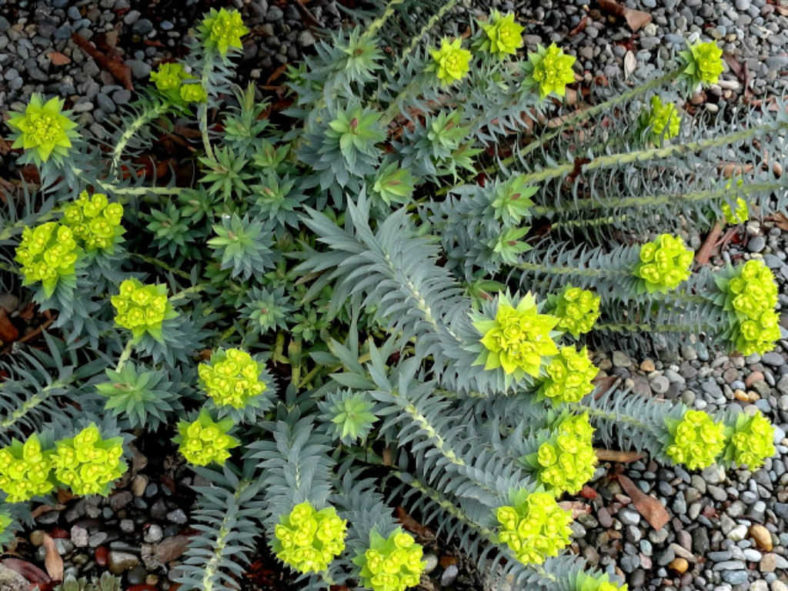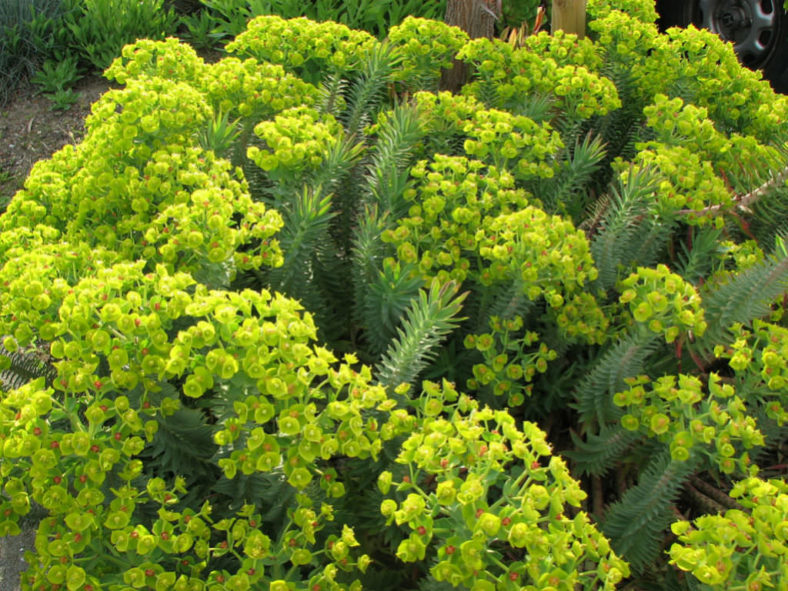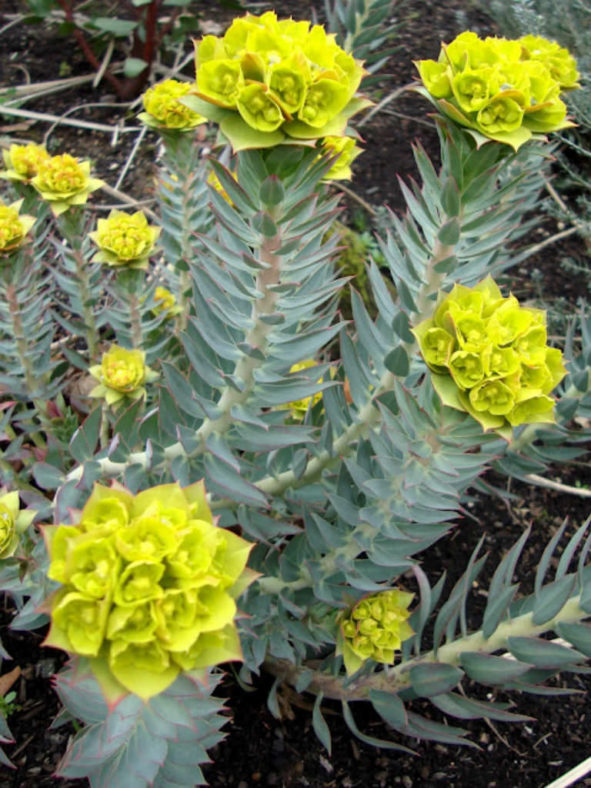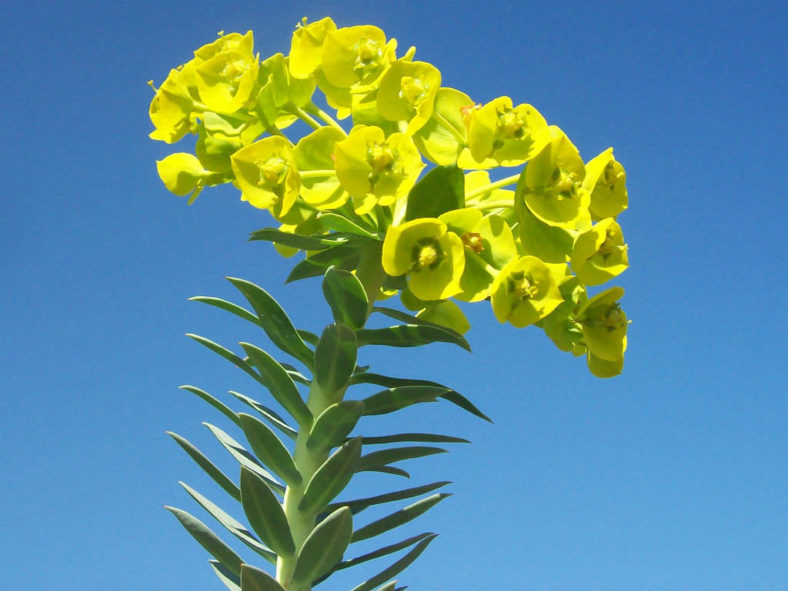Scientific Name
Euphorbia rigida M.Bieb.
Common Name(s)
Gopher Spurge, Silver Spurge, Upright Myrtle Spurge
Synonym(s)
Euphorbia biglandulosa, Galarhoeus rigidus, Tithymalus rigidus
Scientific Classification
Family: Euphorbiaceae
Subfamily: Euphorbioideae
Tribe: Euphorbieae
Subtribe: Euphorbiinae
Genus: Euphorbia
Origin
The native range of Euphorbia rigida is the entire Mediterranean Region from Portugal through North Africa to Syria, Turkey, and Iran, where it is considered a weed. It grows on dry, rocky slopes at elevations above 3,000 feet (910 m).
Description
Euphorbia rigida, formerly known as Euphorbia biglandulosa, is a shrubby plant with attractive, blue-green, somewhat succulent leaves arranged in close spirals around the thick upright stems. It can grow up to 2 feet (60 cm) tall, forming clumps up to 3 feet (90 cm) in diameter. The leaves are lance-shaped and can measure up to 1.5 inches (3.8 cm) long. They can take on reddish-bronze hues in the fall.
The small flowers are green with showy chartreuse-yellow bracts that age to a reddish-tan as the flowering stalks die back. They appear in domed clusters at the stem tips in late winter and spring.

Hardiness
USDA hardiness zone 7a to 10a: from 0 °F (−17.8 °C) to 35 °F (+1.7 °C).
How to Grow and Care
Euphorbias are very easy to care for. They require a little pampering to become established, but once they are, they are self-sufficient. More die from too much care and watering than from neglect.
Euphorbias need well-draining soil and lots of sunlight. They are not particular about soil pH but cannot tolerate wet soil. Unlike most succulents, Euphorbia does not handle long periods of drought well. It may need weekly watering during the summer. Water whenever the soil is dry several inches below the surface. Water deeply, but don't let them sit in wet soil, which can cause root rot. Add some organic matter or fertilizer to the planting hole. If you are growing them in containers or your soil is poor, feed them with a half-strength fertilizer monthly.
Euphorbia can be grown from seed, but they can be difficult to germinate (or even find). It is usually propagated by cuttings. This can be tricky because of the exuding sap. Rooting hormone is recommended with Euphorbias.
See more at How to Grow and Care for Euphorbia.
Links
- Back to genus Euphorbia
- Succupedia: Browse succulents by Scientific Name, Common Name, Genus, Family, USDA Hardiness Zone, Origin, or cacti by Genus
Photo Gallery
Click on a photo to see a larger version.


